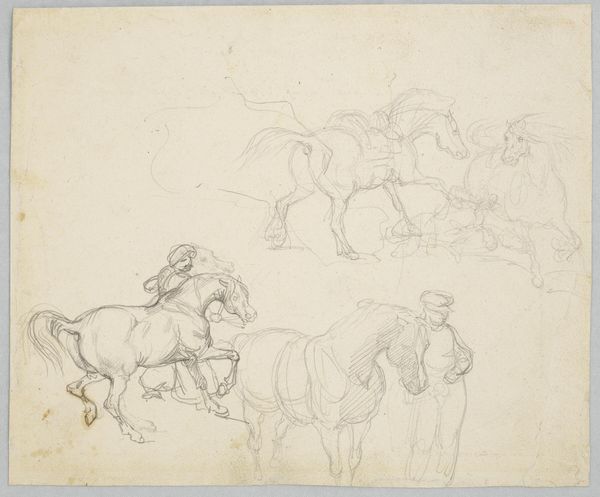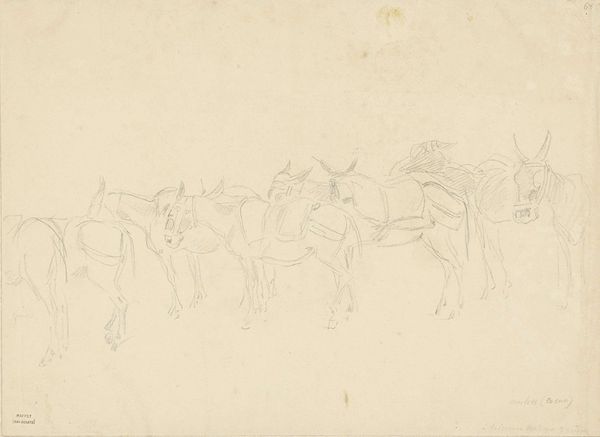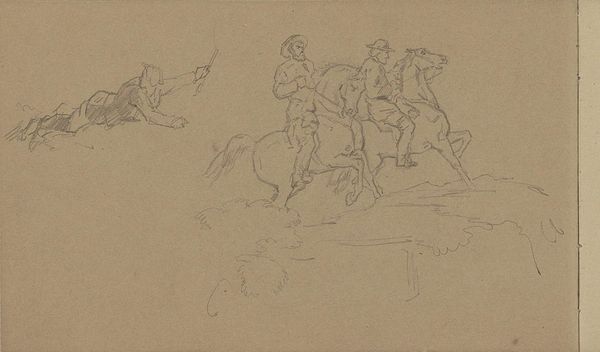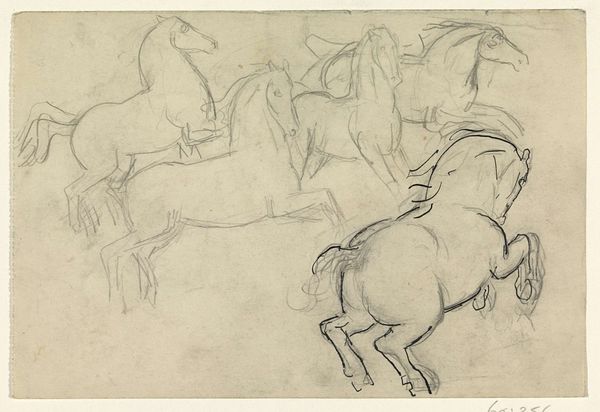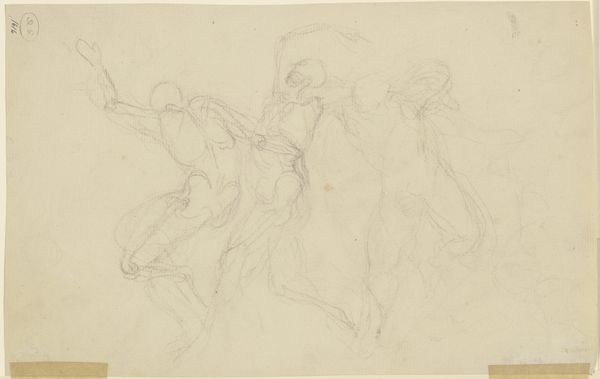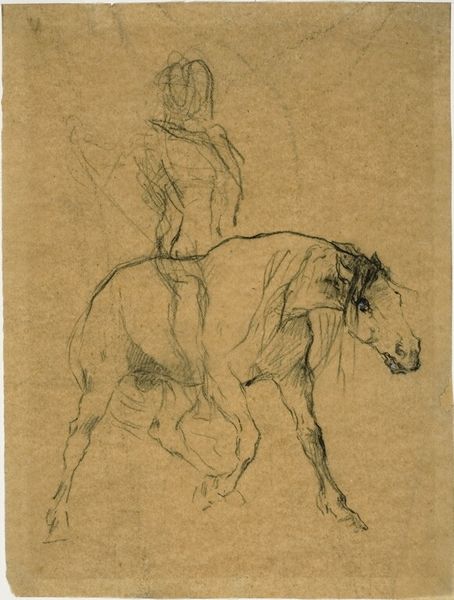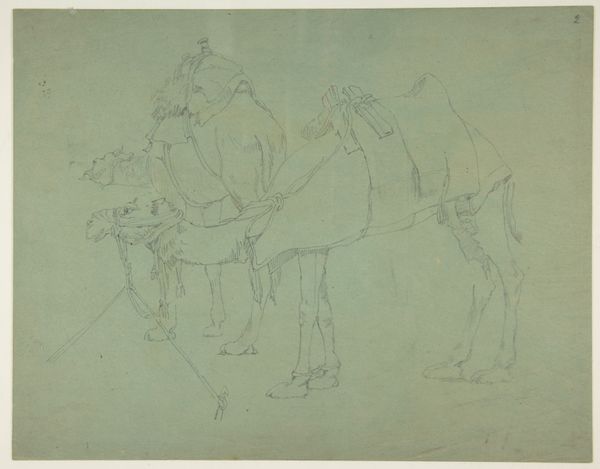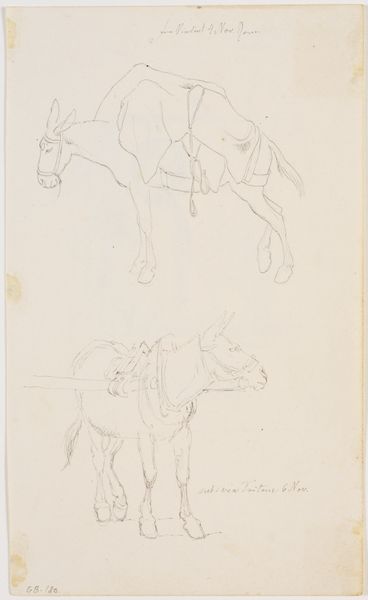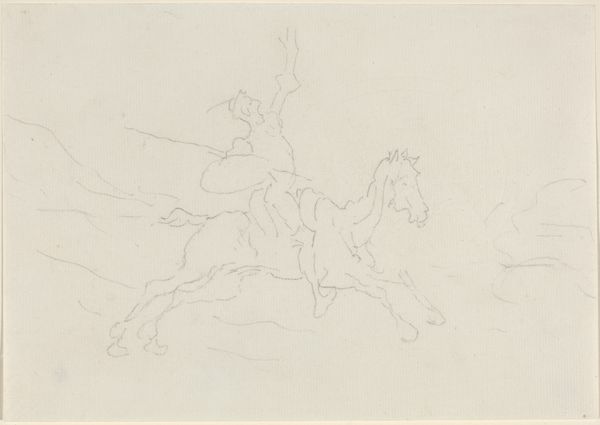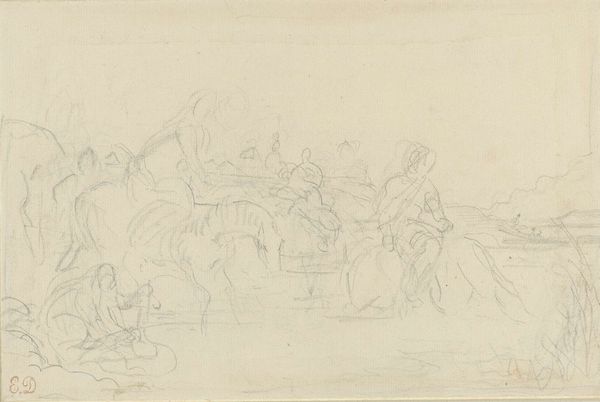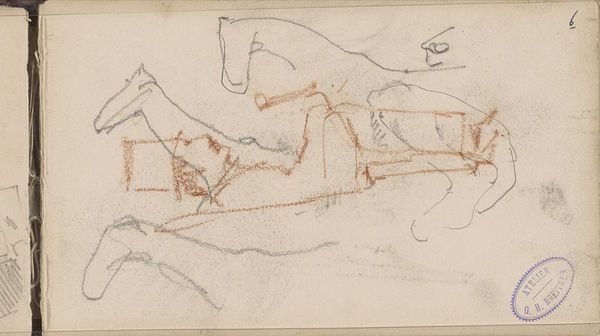
Dimensions: Overall: 24.7 x 32.7 cm (9 3/4 x 12 7/8 in.) support: 25.5 x 33.5 cm (10 1/16 x 13 3/16 in.)
Copyright: National Gallery of Art: CC0 1.0
Curator: This is "Six Circus Horses with Riders," a pencil drawing from 1905 by Pablo Picasso. What are your initial thoughts? Editor: There's an ethereal, almost ghostly quality to it. The figures are so lightly sketched, they feel like fleeting memories rather than solid forms. Curator: Indeed. The loose, almost impressionistic style contrasts sharply with some of his later, more defined work, even though the drawing style relates strongly to landscape sketches. Picasso was quite young when he made this. His early exploration with depicting movement is intriguing. How does this contribute to our understanding of circus performance at the time? Editor: Absolutely, the subject matter here is equally critical. These sketches emerged during a transformative period in the cultural understanding of entertainment and spectacle. The circus, often featuring marginalized groups, provided a venue where societal norms were both performed and subverted. The lack of strong color and the ethereal feel give me the impression that it alludes to the performers fleeting presence, the temporary community formed at the circus itself. Curator: I agree. Think about the sociopolitical context too: circuses provided entertainment but also work, a precarious work that highlights inequalities within the gilded era. The riders being seemingly nude adds another layer. Are they vulnerable or powerful? Does it question gender roles? Editor: Those pencil lines might actually echo larger concerns of vulnerability and representation. Early modern performers often faced immense financial precarity. Perhaps Picasso's work unintentionally reveals the delicate balance between illusion and exploitation. What also strikes me, within the composition, is that all horses and figures seem self-contained, not interacting, furthering the loneliness and marginalization many of these circus performers probably felt. Curator: A crucial observation. The lack of interaction underscores a deeper sense of isolation. Picasso does so in his paintings of this period as well, and it is one of the major themes for us to acknowledge. It is a wonderful illustration of the role of art, too: to look deeper at those people and systems of inequality surrounding it. Editor: Reflecting on Picasso's preliminary study, I see now it does more than capture mere movement; it reveals society in that very instant in time. Curator: And how insightful to analyze such fleeting pencil strokes to come to such grand realisations. Thank you.
Comments
No comments
Be the first to comment and join the conversation on the ultimate creative platform.
